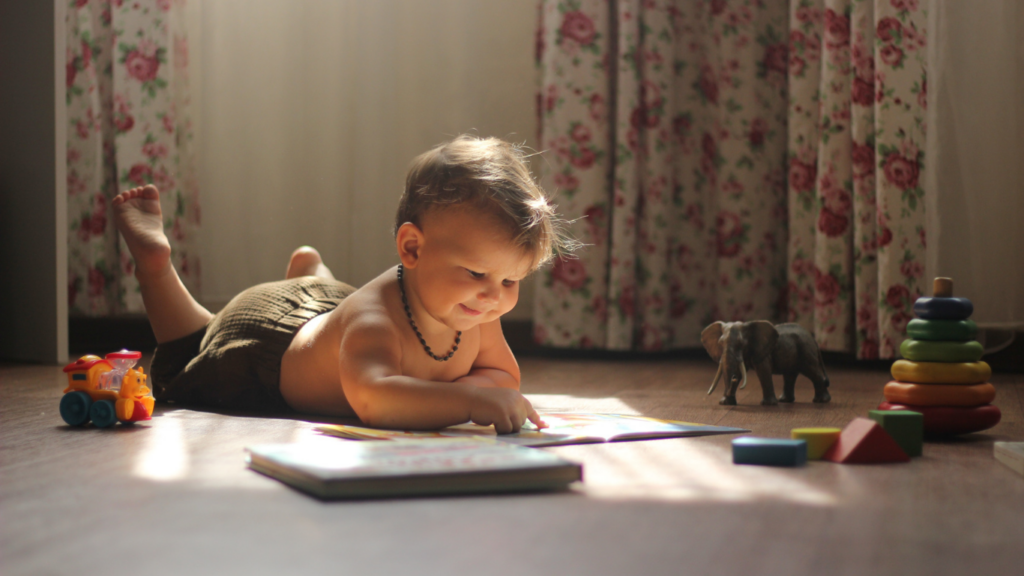Play isn’t just fun; it’s a crucial part of how our brains develop during childhood. As I dive into the fascinating world of neuroscience, I’ll explore how play influences brain growth and learning.
From imaginative games to physical activities, each type of play sparks neural connections that shape cognitive abilities, social skills, and emotional resilience. Understanding the science behind play helps us appreciate its role in childhood development.
It’s not merely a pastime; it’s an essential component of learning that lays the groundwork for future success. Join me as I uncover the intricate relationship between play and brain development, and discover why fostering a playful environment is vital for nurturing young minds.
The Importance of Play in Child Development
Play serves as a crucial element in child development, driving brain growth and learning. Engaging in various forms of play lays the groundwork for lifelong skills.
Cognitive Benefits of Play
Play enhances cognitive development by stimulating neural connections. Activities like puzzles and building blocks foster critical thinking and problem-solving skills. Imaginative play encourages creativity and flexibility, allowing children to explore different perspectives.
Research indicates that children involved in structured play exhibit improved attention spans and better memory retention. Additionally, collaborative play experiences promote language skills, as children communicate their thoughts and ideas with peers.
Emotional and Social Development
Play significantly contributes to emotional and social growth. Through interaction with peers, children learn essential skills like empathy, cooperation, and conflict resolution. Role-playing scenarios help them navigate feelings and understand social cues.
Moreover, physical play can reduce anxiety and improve mood, leading to greater emotional resilience. Engaging in group games or team sports teaches discipline and teamwork, key components for successful social interactions later in life.
The Neuroscience Behind Play
Play significantly influences brain growth and neural development during childhood. Understanding its neuroscience reveals how playful activities enhance learning and cognitive abilities.
Brain Plasticity and Learning
Brain plasticity refers to the brain’s ability to reorganize itself by forming new neural connections throughout life. In children, engaging in play stimulates this plasticity, facilitating learning and adaptation.
For instance, play experiences like climbing, running, and building create dynamic environments that encourage exploration. Complex play scenarios require children to solve problems, promoting higher-level thinking. Research indicates that engaging in varied types of play enhances synaptic connections, which supports capabilities such as memory, attention, and executive function skills.
The Role of Neurotransmitters
Neurotransmitters are the brain’s chemical messengers, crucial for transmitting signals between neurons. During play, specific neurotransmitters, like dopamine and serotonin, increase, enhancing mood and motivation.
Dopamine, released during enjoyable play activities, reinforces behaviors, making children more likely to repeat these experiences. Enhanced serotonin levels contribute to feelings of well-being, enabling children to engage more freely in social interactions.
This chemical balance fosters an enriching environment for emotional and social development, solidifying learning experiences that stem from playful contexts. The connection between play and neuroscience illustrates the importance of integrating playful activities into daily routines for optimal brain growth and holistic childhood development.
Types of Play and Their Impact
Different types of play significantly influence childhood development and brain growth. Understanding these distinctions helps in creating supportive environments for young learners.
Structured vs. Unstructured Play
Structured play involves organized activities with specific rules, such as board games or organized sports. This type promotes skills like discipline and teamwork. Studies show structured play enhances memory retention and attention spans.
Unstructured play, like free play or imaginative games, encourages creativity and flexibility. It allows children to explore their environment, fostering problem-solving skills and cognitive development. Research indicates that unstructured play contributes more to social skills, as children interact freely without predetermined outcomes.
Cooperative Play vs. Solo Play
Cooperative play includes interactions among peers, such as team games or group projects. Engaging collaboratively fosters communication skills, empathy, and conflict resolution. Additionally, it instills a sense of belonging and teamwork.
Solo play involves individuals engaging independently, like reading or solitary art projects. This type encourages self-reliance and personal exploration, enhancing problem-solving abilities. Studies highlight that a balance of both cooperative and solo play is vital for holistic development, as each type contributes uniquely to emotional, social, and cognitive growth.
The Role of Caregivers and Educators
Caregivers and educators play a pivotal role in facilitating childhood development through engaging play experiences. Their involvement directly influences children’s social, emotional, and cognitive growth, making their guidance essential in shaping enriching environments.
Creating Enriching Play Environments
Creating stimulating play environments enhances children’s learning experiences. Caregivers and educators can achieve this by:
- Incorporating diverse materials: Use toys, art supplies, and nature elements like sand and water for sensory exploration.
- Designing safe spaces: Ensure areas for active play are safe while encouraging movement to develop physical skills.
- Utilizing different settings: Leverage both indoor and outdoor spaces to broaden learning experiences and foster adaptability.
- Providing open-ended activities: Offer materials that promote exploration and creativity, like blocks, puppets, or open-ended questions.
Such environments promote curiosity and motivate children to engage actively in their learning.
Encouraging Imaginative Play
Encouraging imaginative play develops creativity and problem-solving skills. Caregivers and educators can support this type of play by:
- Offering role-playing opportunities: Supply costumes and props that allow children to engage in diverse scenarios, enhancing social understanding.
- Facilitating storytelling activities: Provide tools for storytelling, such as books and felt boards, to inspire language development and communication skills.
- Promoting group activities: Organize collaborative play sessions where children create their own narratives, fostering cooperation and communication.
- Valuing spontaneous play: Encourage children to direct their own play, allowing them to explore their interests and ideas freely.
By emphasizing imaginative play, caregivers and educators cultivate an environment where children can express themselves creatively and develop essential cognitive skills.



